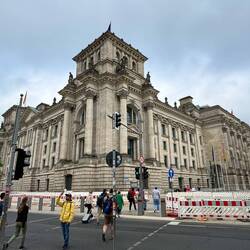Day 29: Berlin
 11 de mayo, Alemania ⋅ ☁️ 15 °C
11 de mayo, Alemania ⋅ ☁️ 15 °C
We smashed this city in one day seeing all the sites we wanted to and more. The Brandenburg gates; checkpoint Charlie; the Berlin Wall. But by for the monument and museum to the murdered Jews ofLeer más
































































































































Viajero So much to see!!
So much to see!!
Viajero One of my favourite cities, been there a few times and still haven’t seen everything.
Viajero Agree!